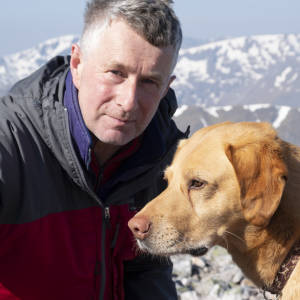SV Surveying
Boring blip.
This is our new Trimble R10. It combines a GPS antenna, advanced receiver and transmit and receive radio modem.
The on board controls are limited to an on off button but it has an almost infinite combination of settings configured by a wifi interface on a PC or even a smart phone with a web browser. It can also accept a sim card and thus has internet access in areas with cell phone coverage.
For a typical bread and butter survey exercise this unit is mounted on a 2m carbon fibre pole and is controlled by Bluetooth commands from a ruggedised PC mounted on a bracket half way down the pole. (A rover)
The trick to getting an accurate measurement or position with GPS is not from data straight out of the sky but the ability to reconcile concurrent data from your rover and that of a reference antenna set up over a known point. The presumption is that the error-and there is always an error-is similar at both the reference and rover and cancel one another out. A simple analogy would be measuring a distance with a tape held by two people who allowed it (though still tight) to slide back and forth over the points you were trying to measure. As long as you knew the two tape measurement readings at each end at precisely the same instant you still have the information to get the net distance. In this context the reference station can be 50 miles or 5 yards away and the calculation can be done either afterwards or real time. In the latter (RTK) a correction signal is transmitted from the base reference station by radio modem or the cell phone network.
A lot of clever people have put their heads together to get to this stage. We talk generically about GPS. GPS is the original American military space vehicles launched to allow air, ground and sea navigation of forces. There are now Russian, Chinese and European SVs up there too.
My first GPS (and it was GPS only back then) had the antenna on the pole, the controller on the bracket and in a back pack, separate brick shaped housings for radio modem and receiver electronics. The whole lot was connected with a mass of cables and you carried four heavy lead acid batteries to keep it running for a short shift. The hardware was excellent for the time but the company who sold it did not have anyone in the UK who knew how it worked. As one of the early adopters I was very much left unsupported until the manager at the Sunderland office got an expert from Kansas USA to come to my house to deliver a weekend of intensive training. I am still very grateful to Mr Caskey and the lady in Sunderland who made it happen.
I hope that has cured your insomnia.

Comments
Sign in or get an account to comment.


